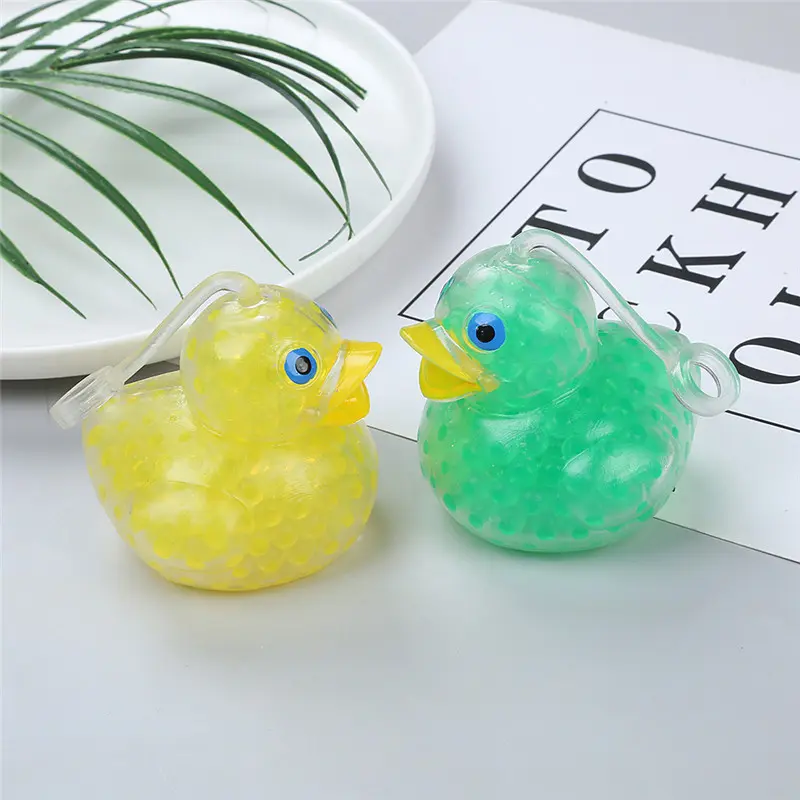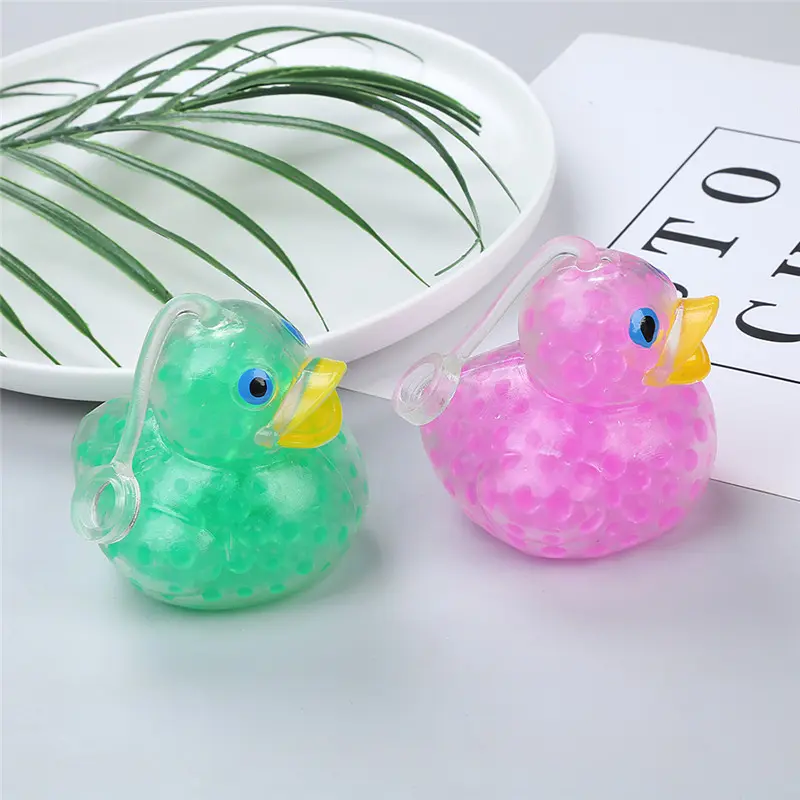TPR Children’s Stress Relief Toys: Protecting Children’s Emotions and Accompanying Healthy Growth
As the morning sun streams into the room, you find your child clutching their school bag strap and refusing to leave, tears welling in their eyes. On the weekend, while building with your child, he suddenly pushes the blocks over because a piece is misplaced, and bursts into tears. As a parent, do you often feel heartbroken and helpless in these moments? Children, like adults, face stress: the unfamiliar environment of kindergarten, the frustration of learning new skills, or even simply having their daily routine disrupted can all lead to anxiety. Instead of preaching, a safe and fun stress-relief toy can often be a great way for children to release their emotions. Today, let’s discuss TPR stress-relief toys designed specifically for children and explore why they’ve become a new favorite among parents worldwide.
1. Why TPR? The dual guarantee of safety and durability
When choosing toys for children, safety is always a top priority for parents. TPR (thermoplastic rubber) material, with its unique physical properties, perfectly meets the safety requirements of children’s toys.
First, TPR is a top-performing material in terms of food-grade safety standards. Authentic TPR children’s stress relief toys are certified by the EU CE, US CPSIA, and FDA for food contact. They are free of harmful substances like BPA and phthalates, making them safe for even young children who are just learning to chew. Furthermore, it offers a delicate touch—soft yet non-sticky, with no pungent chemical odor—making children eager to play with it from the first moment.
Second, TPR’s durability offers peace of mind for parents. Children often play with toys in a destructive way: stretching them, squeezing them repeatedly, and even accidentally dropping them. TPR material boasts exceptional elasticity and toughness—even when stretched to 3-5 times its original length, it instantly returns to its original shape upon release. When dropped from a table, it won’t shatter like plastic toys, nor shed or clump like plush toys. Many overseas parents have reported that their children’s TPR stress relief toys have lasted for over six months, and aside from a few small teeth marks on the surface, their performance remains intact, making them far more cost-effective than ordinary toys.
2. More Than Just Fun: The Scientific Stress Relief Principle of TPR Stress Relief Toys
Why can a small TPR toy calm a crying child? The underlying scientific logic behind this lies in the fundamentals of children’s emotional management.
Children’s brains are still immature, and they can’t clearly express “I’m nervous” or “I’m angry” verbally like adults do. They can only release their emotions through physical gestures. The design of TPR stress-relieving toys precisely matches children’s sensory needs: when children squeeze the toys, the soft material provides a clear “feedback” sensation in their hands. This tactile stimulation activates the brain’s “calming area” and helps reduce the secretion of cortisol (the stress hormone). The repeated pinching, kneading, and stretching movements also distract children, allowing them to escape frustration and gradually regain a sense of control over their emotions.
For example, our TPR “Cloud Squeeze” toys are filled with special air bladders that emit a gentle “popping” sound when squeezed—a soothing sound that can further soothe children’s anxiety. An American kindergarten teacher shared that she places several TPR stress-relieving toys in her classroom’s “emotional corner.” Whenever a child cries due to homesickness or a conflict with a friend, she gives them one to play with. Usually, after 5-10 minutes, the child wipes away their tears and rejoins the group activity.
III. Beyond “Stress Relief”: The Growth-Assisting Value of TPR Toys
High-quality children’s toys are more than just a way to pass the time. TPR stress relief toys not only help children manage their emotions, but also quietly support their development.
For children aged 1-3, TPR toys are a powerful tool for fine motor training. For example, our TPR animal toys (bear, bunny, and dinosaur) feature raised textures and movable parts. When children use their fingers to scratch the textures and pinch the animal’s ears, they develop fine motor coordination, laying the foundation for future pen grasping and writing. Different colored toys (such as a pink pig and a blue whale) also help children recognize colors and stimulate visual development.
For children aged 3 and above, TPR toys can serve as a social bonding tool. Many parents have found that when their children take their TPR stress-relieving toys to the park or preschool, they easily attract other children to interact with them, asking, “Can we play together?” or “Look, I can shape it into a circle!” This kind of toy-based communication can help introverted children open up and learn to share and cooperate. Furthermore, some TPR toys with creative play options (such as moldable TPR clay and connectable TPR building blocks) can spark children’s imaginations. One British mother reported that her children would shape TPR clay into “Dad’s tie” and “Mom’s cup,” then excitedly display them, making parent-child interaction more engaging.
Fourth, Parent’s Guide: How to Choose and Use TPR Children’s Stress-Relief Toys Effectively?
With so many TPR stress-relieving toys on the market, how should parents choose? And how can they guide their children in using them correctly?
1. Choose the right toys for your age group
1-2 year olds: Prioritize larger toys (diameter ≥ 10cm) without small parts (such as large TPR balls or large-sized squishy animals) to reduce the risk of swallowing. Softer materials are recommended for easier grip.
3-6 year olds: Choose toys with detailed designs (such as textured TPR blocks or sound-making TPR keychains). You can even try TPR puzzles or DIY sets to satisfy their curiosity.
2. Leverage “Scenario-Based Use”
Before school: If your child cries every morning because he doesn’t want to be apart from Mom, have him hang a small TPR keychain toy on his school bag. Instruct him, “When you miss Mom, squeeze it. It’ll feel like Mom is right there with you.”
During travel: Children can be fidgety on long car or plane rides. Bring a TPR stress-relieving toy to keep them occupied and play quietly in their seats. Before bed: If your child experiences bedtime anxiety, play with them using TPR toys, such as competing to see who can make the most unique shapes. This relaxing interaction will help them relax and fall asleep.
3. Simple Maintenance, Extended Lifespan
TPR toys are easy to care for: For daily cleaning, gently wipe with warm water and a small amount of baby laundry detergent, then air dry (avoid direct sunlight to prevent material degradation). If the toy’s surface gets dusty, simply wipe it with a damp cloth to clean it. With proper care, a TPR stress-relieving toy can last throughout your child’s early childhood.
Finally: Providing an emotional outlet is more important than reasoning.
Every child deserves a safe emotional corner, and TPR children’s stress-relieving toys are the guardians of this corner. They can’t speak, but they can listen to children’s grievances; they don’t have magic tricks, but they can help children find peace. As a brand specializing in children’s safety toys, we have always believed that good toys can not only bring happiness to children, but also help them learn to deal with their emotions – this is the “real gift” that accompanies children’s growth.
Post time: Sep-15-2025

